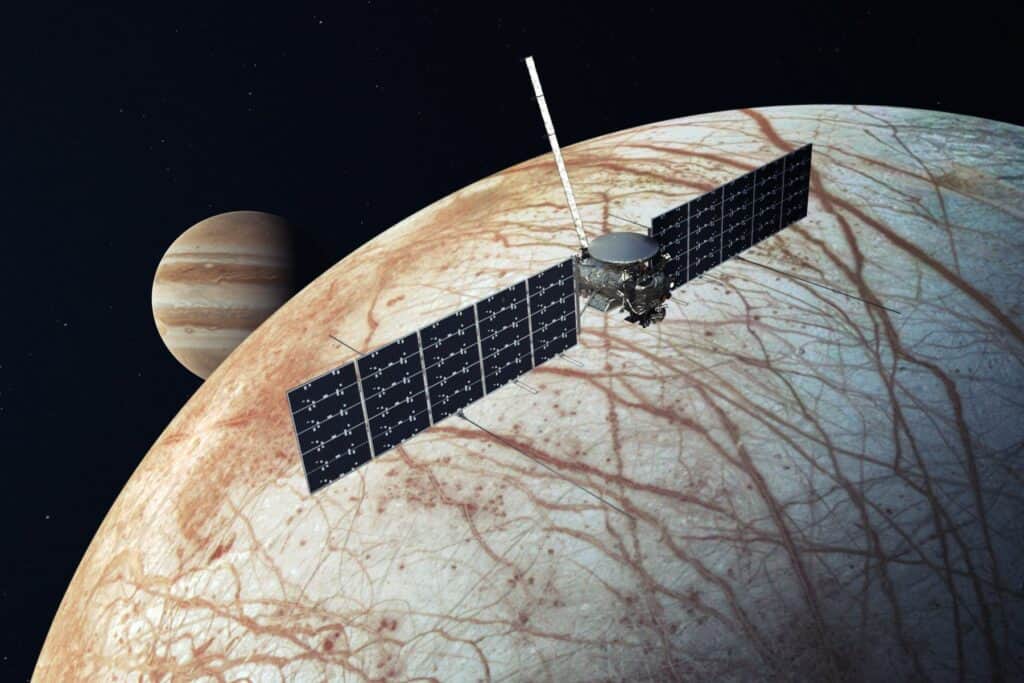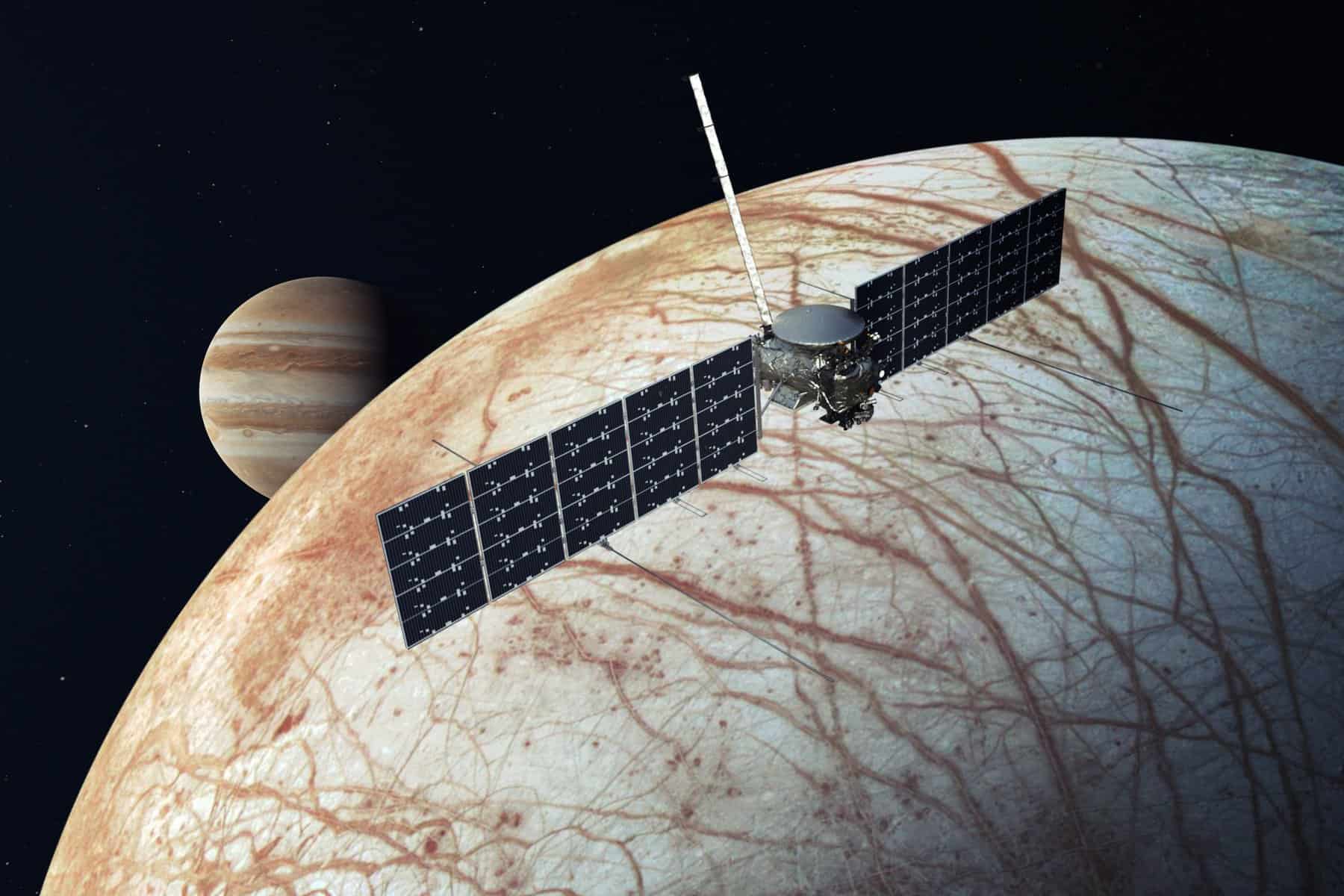What will the Europa Clipper do?
NASA’s Europa Clipper mission is one of the most anticipated space missions of the decade, aiming to explore the mysterious icy moon of Jupiter—Europa. This ambitious mission holds the promise of uncovering clues about life beyond Earth, making it a significant milestone for both space exploration and astrobiology.
The Europa Clipper mission is a NASA-led initiative designed to study Europa, one of Jupiter’s largest moons. Europa has long fascinated scientists because of its icy surface and the possibility of a subsurface ocean beneath the ice. The mission’s primary objective is to determine whether Europa has the right conditions to support life.

The Goals of the Europa Clipper Mission
The Europa Clipper mission has several important goals:
Investigating Europa’s Ice Shell:
One of the main objectives is to study the thickness and composition of Europa’s ice shell. This will provide clues about the moon’s geological processes.
Examining the Subsurface Sea:
Researchers accept there may be a sea underneath Europa’s frigid surface. Europa Clipper will use specialized instruments to confirm its existence and explore its depth.
Exploring the Potential for Life:
Europa’s ocean, combined with chemical interactions between the water and the moon’s rocky interior, could create the conditions needed for life. The mission will search for signs of habitability.
Understanding Europa: A Mysterious Icy Moon
Europa is unique among the moons of Jupiter. It has a smooth, icy surface with fewer craters than other moons, suggesting that geological processes may be actively reshaping it. Beneath this icy crust, it is believed that a vast ocean of liquid water may exist, kept warm by the gravitational forces exerted by Jupiter.
Why is Europa Clipper Important for Astrobiology?
Europa’s subsurface ocean might be one of the most promising places to see for life past Soil. Scientists are particularly interested in Europa because of the moon’s potential to harbor the chemical ingredients necessary for life, including water, energy sources, and organic molecules.
How Will the Europa Clipper Explore Europa?
The Europa Clipper spacecraft will not land on Europa but will instead conduct dozens of close flybys as it orbits Jupiter. By using a suite of advanced scientific instruments, Europa Clipper will gather data about the moon’s ice shell, subsurface ocean, and surface features.
The Journey to Jupiter
The journey to Jupiter is no simple task. After launching from Earth, Europa Clipper will travel for several years before reaching its destination. It will use gravitational assists from other planets to speed up its journey and conserve fuel.
Instruments on the Europa Clipper
Europa Clipper is equipped with a variety of sophisticated instruments designed to study the moon in detail:
Ice-Penetrating Radar:
This radar will allow scientists to see through Europa’s icy shell and gather information about its thickness and the ocean beneath.
Thermal Imager:
This device will look for heat signatures on Europa’s surface, which could indicate active geological processes.
Spectrometers:
These will analyze the composition of Europa’s surface to detect organic compounds and other chemicals.
Magnetometers:
These will measure Europa’s magnetic field, providing insights into the depth and salinity of its ocean.
Studying Europa’s Surface and Subsurface
The key center of the mission is to diagram and analyze Europa’s chilly surface and the ocean underneath. The ice-penetrating radar will be vital in understanding how thick the ice is and whether there are pockets of fluid water close the surface.
The Ice-Penetrating Radar:
Peeking Beneath the Surface Europa Clipper’s ice-penetrating radar will be used to search for the subsurface ocean and detect variations in the ice thickness. By peering underneath the surface, researchers trust to pick up modern bits of knowledge in the moon’s covered-up sea.
Thermal Imaging: Detecting Heat Activity
Thermal imaging will help scientists spot warm areas on Europa’s surface, which may indicate geological activity or subsurface water. These hotspots could provide valuable clues about potential habitable environments.
Europa Clipper’s Contributions to Planetary Science
The data gathered by Europa Clipper will significantly advance our understanding of icy moons, not only in our solar system but in other planetary systems as well. It could also help prepare for future missions to explore other ocean worlds, such as Saturn’s moon Enceladus.
How NASA Will Manage the Mission in Space
Communicating with a shuttle billions of miles absent is no simple errand. Europa Clipper will send information back to Soil through NASA’s Profound Space Arrange. Power will be supplied by large solar arrays, allowing the spacecraft to function even in the outer reaches of the solar system. Read More…
What are the Challenges of Exploring Europa?
Europa is located within Jupiter’s intense radiation belt, which poses a significant challenge for the mission. The spacecraft will need to be carefully designed to withstand these harsh conditions.
What Does the Future Hold for Europa Exploration?
The Europa Clipper mission could pave the way for future missions that might one day land on the moon’s surface or even drill through its ice to explore the ocean beneath. This mission is just the beginning of humanity’s exploration of Europa.
Conclusion
NASA’s Europa Clipper mission is a monumental step forward in our quest to explore the solar system and search for life beyond Earth. By studying Europa in detail, scientists hope to unlock the secrets of this icy moon and its hidden ocean.








One Comment